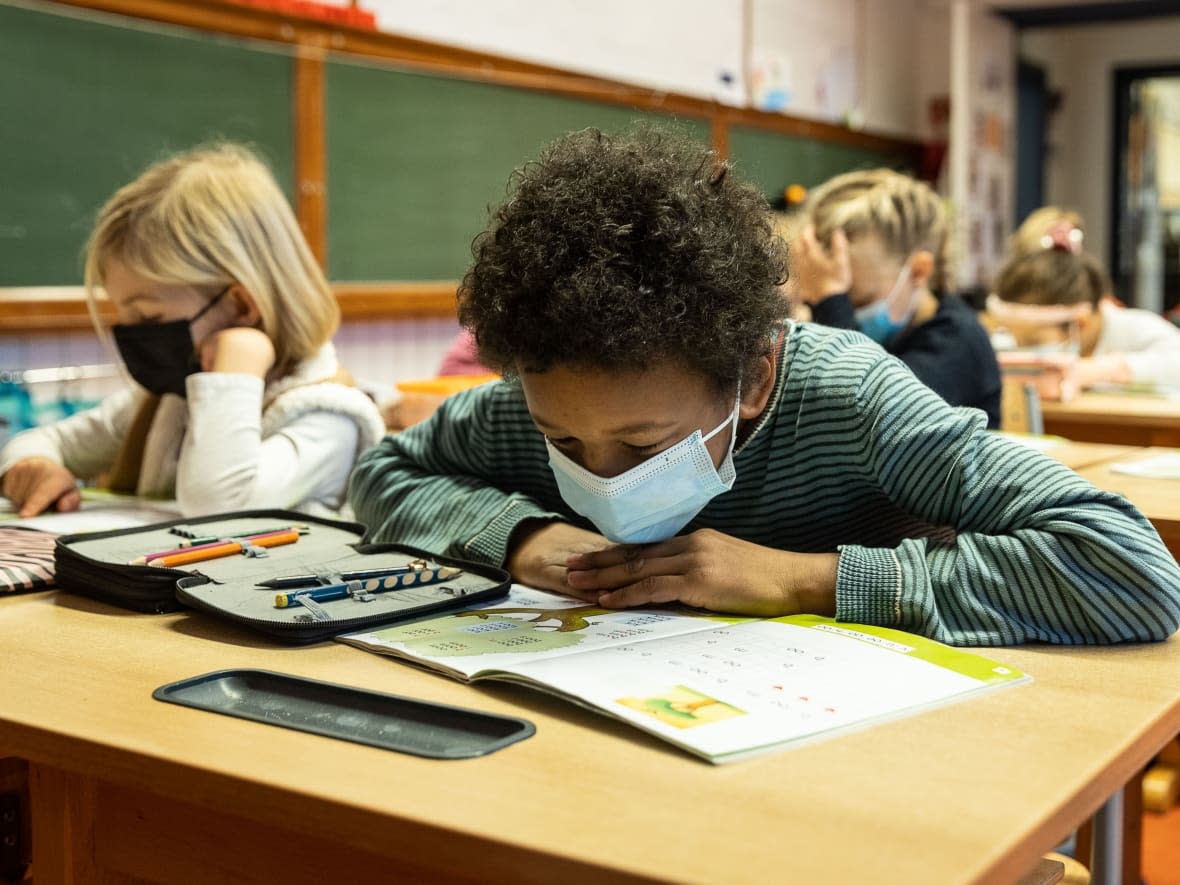Saskatoon Public Schools to charge fees for lunch-hour supervision, cut teaching jobs to balance books

The board chair of Saskatchewan's largest school division said she cried when making a motion to approve the 2022-23 academic year budget on Tuesday.
"Every time we make a decision at the board table, the first question I ask is, 'Is this good for students'? And yesterday the answer was no," said Saskatoon Board of Education chair Colleen MacPherson.
"We continue to have to trim our operation, try and amalgamate, find efficiencies across the division, and every year it gets harder and harder."
MacPherson said this is the sixth year in a row that provincial funding hasn't kept up with inflationary pressures, and they're picking at the barest of bones as they try to support staff and students.
She said the division is working with a $4.5-million shortfall. Provincial funding increased by 2.1 per cent, or $5.2 million, but she said most of that money is going toward previously negotiated salary increases for teachers.
The funding isn't on par with inflationary pressures, she said.
"Those include growing enrolment, but also the pressures that we're all feeling every day ... at a gas station, we don't get a break just because the bus is yellow," MacPherson said. "This is death by a thousand cuts."
Charges for noon supervision, staffing cuts
The new budget includes cuts to staffing and a new $100-per-child lunchtime supervision fee if the child does not go home during the lunch hour. Macpherson said the fee will be capped at $200 for families with more than two kids in the school system, and noted parents experiencing financial hardships will be exempt.
Saskatoon Public Schools said it is cutting 12.7 full-time equivalent (FTE) positions in elementary schools and 6.9 positions in secondary schools. The division expects about 300 more students in the fall, so the student to teacher ratio will go up.
It is also cutting one educational psychologist position, one English as an additional language teaching position, and half of a speech language pathologist position. There will also be a reduction of three community school co-ordinator positions.
"It's going to mean it'll be a little bit more difficult to provide those specific supports that students need. It will challenge us across the division. Again, we're being asked to do more with less," she said.
The school division said all affected staff will be redeployed or will finish the term of their contract. It will be hiring 21 education assistants thanks to $1 million in targeted funding from the province, but MacPherson said students will ultimately be worse off.
Approximately 26,000 students attend Saskatoon Public Schools and the division employs more than 2,600 staff.
Cuts in other Sask. divisions
MacPherson predicts it will be difficult for students to meet achievement targets set by the Ministry of Education with such limited resources.
"We're going to struggle to make those targets because we simply do not have the resources that we need to support our students in all the various ways that they need support, including their mental health," she said, adding it's not just Saskatoon Public Schools that's affected by limited provincial funding.
Earlier this year, Chinook School Division said shortfalls in the provincial budget mean it will have to cut 20 teaching positions and Saskatchewan's South East Cornerstone Public School Division said it would be cutting 21 teaching positions and 11 other support staff because of inadequate funding.
"I think it's very, very troubling," she said.
A spokesperson for the Ministry of Education said in an email that "once all the budgets are received, the ministry will work with school divisions in reviewing their expenses and monitoring the impact of proposed changes for classrooms."
School divisions have until June 30 to submit their budgets.
MacPherson said that after several years of inadequate funding, it's difficult to know what the magic number would be to get the division in a financial place where it can properly support students.
But she did say the government must do more "than just funding their contractual obligation to teachers in the collective agreement and little else."


